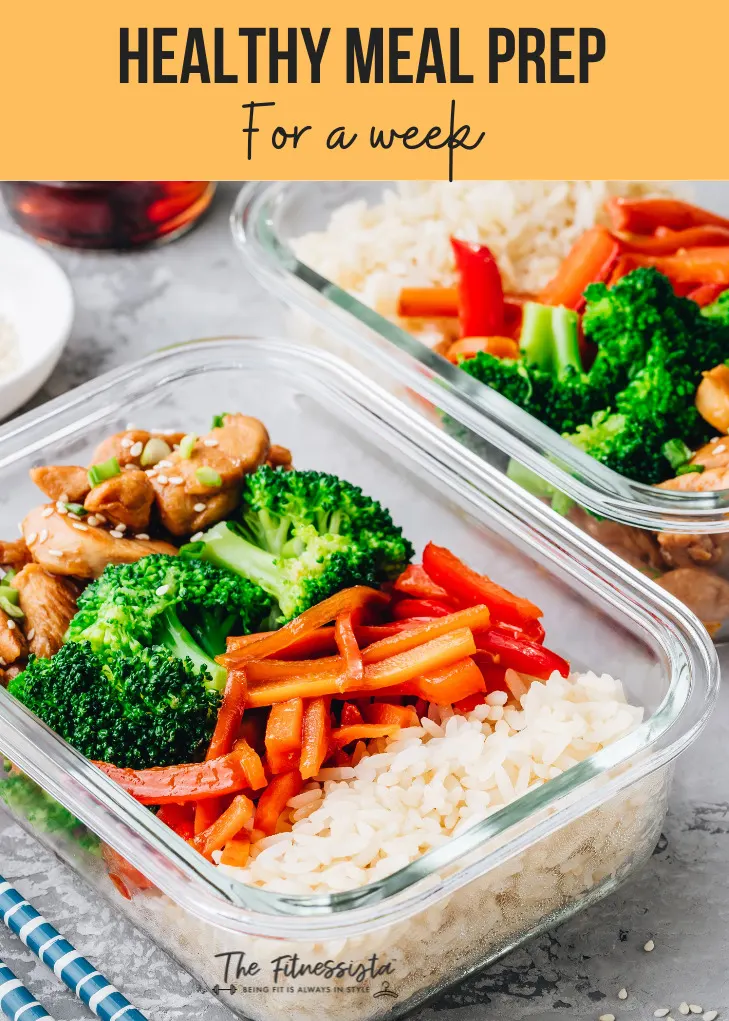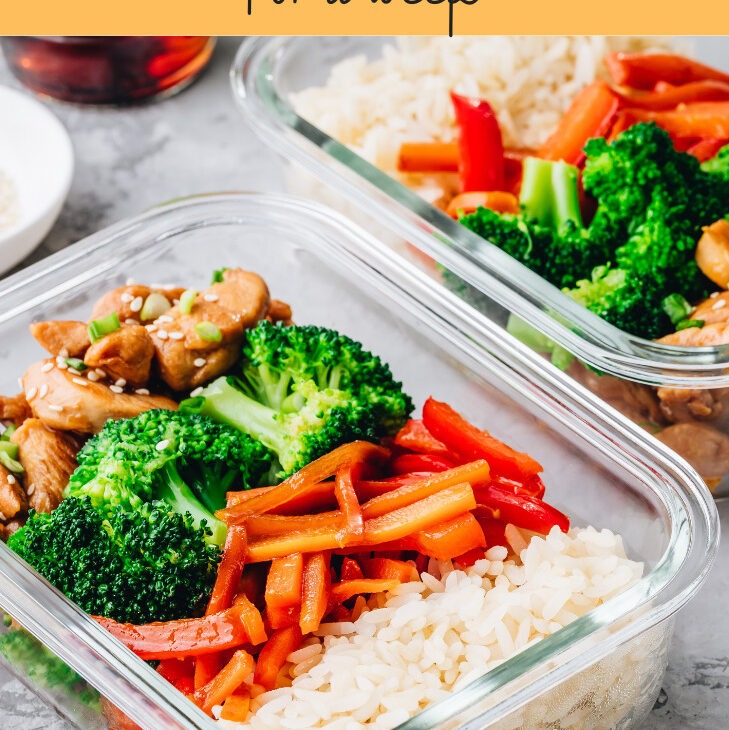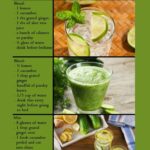Plan your meals, create a shopping list, and prep ingredients in advance. Use portioned containers for easy access.
Preparing healthy meals for the whole week can save time and ensure a balanced diet. Start by planning your meals and writing a detailed shopping list. Purchase fresh, wholesome ingredients that offer nutritional value. Allocate time on the weekend to wash, chop, and cook food in batches.
Store meals in portioned containers to maintain freshness and make daily meal prep effortless. Incorporate a variety of proteins, vegetables, and grains to keep meals interesting and nutritionally balanced. This approach not only streamlines your week but also supports consistent healthy eating habits.

Credit: tastythin.com
Introduction To Weekly Meal Prep
Weekly meal prep is a smart way to save time. You prepare meals in advance for the whole week. This helps you eat healthy without stress. Meal prepping can be fun and rewarding.
Benefits Of Meal Prepping
- Save Time: You spend less time cooking daily.
- Eat Healthy: Control ingredients for balanced meals.
- Reduce Stress: No need to plan meals every day.
- Save Money: Buy ingredients in bulk and avoid takeout.
Common Challenges
Meal prepping can have some challenges. Here are a few common ones:
| Challenge | Solution |
|---|---|
| Lack of Time | Start with simple recipes. Prep in small batches. |
| Limited Storage | Use stackable containers. Freeze meals if needed. |
| Repetitive Meals | Mix recipes each week. Try new ingredients. |
Planning Your Meals
Planning your meals is the first step to ensure a healthy week. It saves time, reduces stress, and helps you maintain a balanced diet. A good plan includes a variety of foods and covers all essential nutrients.
Choosing Nutritious Recipes
Start by choosing recipes that are both healthy and delicious. Look for meals rich in vitamins, minerals, and fiber. Vegetables, fruits, whole grains, and lean proteins are great choices. Avoid recipes with high sugar and fat content.
Here is a sample table to help you pick nutritious recipes:
| Meal | Main Ingredients | Benefits |
|---|---|---|
| Quinoa Salad | Quinoa, spinach, tomatoes, cucumbers | High in fiber and protein |
| Grilled Chicken | Chicken breast, olive oil, herbs | Low in fat, high in protein |
| Smoothie | Banana, berries, spinach, almond milk | Rich in vitamins and antioxidants |
Balancing Macronutrients
Ensure each meal balances carbohydrates, proteins, and fats. Carbohydrates provide energy, proteins build muscle, and fats support cell function.
- Carbohydrates: whole grains, fruits, vegetables
- Proteins: chicken, fish, tofu, legumes
- Fats: avocados, nuts, olive oil
Here is a quick guide to balance macronutrients:
- Fill half your plate with vegetables and fruits.
- Allocate a quarter of your plate to proteins.
- Use the remaining quarter for whole grains or starchy vegetables.
Use this meal plan to ensure you get all the nutrients you need. Planning meals makes it easier to eat healthily every day.
Grocery Shopping Tips
Preparing healthy meals for the week starts with a successful grocery trip. Smart shopping saves time and ensures you have everything you need. Follow these tips to make your grocery shopping efficient and stress-free.
Creating A Shopping List
A detailed shopping list is crucial for meal prep. It keeps you focused and prevents impulse buying. Here’s how to create an effective shopping list:
- Plan your meals for the week.
- List all ingredients needed for each meal.
- Organize your list by categories (e.g., fruits, vegetables, dairy).
- Check your pantry and fridge to avoid buying duplicates.
Shopping For Fresh Ingredients
Fresh ingredients make meals healthier and tastier. Follow these tips to select the best fresh produce:
- Choose seasonal fruits and vegetables for better flavor and cost.
- Look for vibrant colors and firm textures.
- Avoid produce with spots, bruises, or soft patches.
- Buy whole grains, lean proteins, and low-fat dairy products.
Use this simple table to remember what fresh ingredients to buy:
| Category | Examples |
|---|---|
| Fruits | Apples, Bananas, Berries |
| Vegetables | Broccoli, Spinach, Carrots |
| Proteins | Chicken, Fish, Tofu |
| Grains | Quinoa, Brown Rice, Oats |
Smart grocery shopping helps you prepare healthy meals. A well-organized list and fresh ingredients make cooking enjoyable.

Credit: fitnessista.com
Efficient Cooking Techniques
Efficient cooking techniques can make a huge difference in meal preparation. You can save time and ensure you have healthy meals ready for the week. These methods are simple and help you get organized. Let’s explore how to master efficient cooking.
Batch Cooking Basics
Batch cooking involves preparing large quantities of food at once. It saves time and ensures you always have meals ready. Follow these steps to get started:
- Plan Your Meals: Decide what you want to cook for the week.
- Make a Shopping List: List all ingredients needed for your meals.
- Set Aside Time: Dedicate a few hours for cooking and prepping.
- Cook in Bulk: Prepare large batches of grains, proteins, and vegetables.
- Store Properly: Use containers to store your meals in the fridge or freezer.
Using Time-saving Appliances
Time-saving appliances can be a game-changer in the kitchen. They help you cook faster and more efficiently. Here are some appliances you should consider:
- Instant Pot: This multi-cooker can pressure cook, slow cook, and more.
- Slow Cooker: Set it and forget it. Perfect for stews and soups.
- Food Processor: Quickly chop, slice, and shred ingredients.
- Blender: Great for smoothies, sauces, and soups.
- Air Fryer: Cook crispy foods with less oil.
Using these appliances can save you hours each week. You can set them up and let them do the work. This way, you can focus on other tasks while your food cooks.
| Appliance | Best Use |
|---|---|
| Instant Pot | Pressure cooking, rice, stews |
| Slow Cooker | Stews, soups, casseroles |
| Food Processor | Chopping, slicing, shredding |
| Blender | Smoothies, sauces, soups |
| Air Fryer | Crispy foods with less oil |
Storing Your Meals
Storing your meals properly is key to keeping them fresh and tasty. It ensures your hard work in the kitchen doesn’t go to waste. Proper storage can help maintain the nutritional value of your food. Let’s dive into the best ways to store your meals for the week.
Proper Food Storage Methods
Using the right storage methods can keep your meals fresh longer. Here are some tips:
- Use airtight containers: These prevent air and moisture from spoiling your food.
- Divide meals into portions: Store meals in portion-sized containers to make serving easy.
- Keep fridge temperature below 40°F: This slows down bacterial growth.
- Freeze meals you won’t eat soon: Freezing preserves food for weeks.
| Type of Food | Best Storage Method | Storage Duration |
|---|---|---|
| Cooked Vegetables | Airtight Container in Fridge | 3-5 Days |
| Cooked Meat | Airtight Container in Fridge | 3-4 Days |
| Soups and Stews | Freezer-Safe Container | 2-3 Months |
Labeling And Organizing
Proper labeling and organizing can save you time and avoid confusion. Here are some steps:
- Label containers with the date: This helps you keep track of freshness.
- Use clear containers: It’s easier to see what’s inside.
- Organize by meal type: Place breakfasts, lunches, and dinners in separate sections.
- Rotate older items to the front: This ensures you use them first.

Credit: www.cleaneatzkitchen.com
Healthy Breakfast Ideas
Starting your day with a healthy breakfast sets a positive tone. The right meal can boost your energy and keep you focused. Here are some healthy breakfast ideas to prepare for the whole week.
Quick And Easy Options
Short on time? These breakfast ideas are quick and easy.
- Smoothies: Blend fruits, vegetables, and yogurt for a nutritious drink.
- Overnight Oats: Mix oats, milk, and your favorite toppings. Let it sit overnight.
- Fruit and Yogurt Parfait: Layer yogurt, granola, and fresh fruits in a jar.
These options take less than 10 minutes to prepare. They are perfect for busy mornings.
Make-ahead Recipes
Prepare these breakfast recipes in advance. Enjoy a stress-free morning.
| Recipe | Description |
|---|---|
| Egg Muffins | Mix eggs, veggies, and cheese. Bake in a muffin tin. |
| Chia Pudding | Combine chia seeds, milk, and sweetener. Let it sit overnight. |
| Breakfast Burritos | Fill tortillas with scrambled eggs, beans, and veggies. Freeze for later. |
These recipes can be stored in the fridge or freezer. Simply reheat when needed.
With these healthy breakfast ideas, you can enjoy nutritious meals all week.
Nutritious Lunch And Dinner Options
Planning your meals for the week can save time and stress. It also ensures you eat healthy every day. Here are some nutritious lunch and dinner options that are easy to prepare.
Hearty Salads And Bowls
Hearty salads are perfect for lunch or dinner. They are quick to prepare and full of nutrients. You can mix and match your favorite ingredients.
| Ingredient | Benefits |
|---|---|
| Kale | Rich in vitamins A, K, and C |
| Quinoa | High in protein and fiber |
| Avocado | Good source of healthy fats |
| Chickpeas | Packed with protein and fiber |
Combine these ingredients for a balanced salad. Add a light vinaigrette dressing. You can also create bowls with brown rice or sweet potatoes. Top with your favorite veggies and a protein source.
Protein-packed Main Courses
Protein-packed meals are essential for muscle growth and energy. Choose lean meats, fish, or plant-based proteins. Here are some ideas:
- Grilled chicken breast with steamed broccoli and quinoa.
- Baked salmon with asparagus and brown rice.
- Black bean tacos with salsa and avocado.
Cooking your proteins in bulk can save time. Bake a few chicken breasts or a whole fish on Sunday. Use them in different recipes throughout the week.
Plant-based proteins like tofu and lentils are also great options. These can be marinated and cooked in various ways. Try a lentil stew or tofu stir-fry for a delicious meal.
Snacks And Desserts
Preparing healthy meals for the week includes planning for snacks and desserts. These smaller bites can keep you energized and satisfied between main meals. They can also satisfy your sweet tooth without derailing your healthy eating habits.
Healthy Snack Ideas
Healthy snacks are essential for maintaining your energy levels throughout the day. Here are some easy and nutritious ideas:
- Fruit and Nut Mix: Combine unsalted nuts with dried fruits.
- Veggie Sticks with Hummus: Slice carrots, cucumbers, and bell peppers for dipping.
- Greek Yogurt and Berries: Top plain yogurt with fresh berries.
- Apple Slices with Peanut Butter: Spread natural peanut butter on apple slices.
- Rice Cakes with Avocado: Smash avocado on rice cakes, sprinkle with salt.
Guilt-free Desserts
Enjoying a sweet treat doesn’t have to be unhealthy. Try these guilt-free desserts:
- Chia Pudding: Mix chia seeds with almond milk and a touch of honey.
- Frozen Banana Bites: Dip banana slices in dark chocolate and freeze.
- Fruit Sorbet: Blend frozen berries with a splash of orange juice.
- Oatmeal Cookies: Use oats, mashed banana, and a few chocolate chips.
- Coconut Bliss Balls: Combine shredded coconut, dates, and a bit of cocoa powder.
Creating a table for quick reference can help you plan your snacks and desserts more efficiently:
| Snack | Preparation Time | Key Ingredients |
|---|---|---|
| Fruit and Nut Mix | 5 minutes | Nuts, dried fruits |
| Veggie Sticks with Hummus | 10 minutes | Carrots, cucumbers, hummus |
| Greek Yogurt and Berries | 2 minutes | Yogurt, fresh berries |
| Apple Slices with Peanut Butter | 5 minutes | Apple, peanut butter |
| Rice Cakes with Avocado | 5 minutes | Rice cakes, avocado |
Staying Motivated
Preparing healthy meals for the entire week can be challenging. Staying motivated is key to making this a sustainable habit. This section will explore ways to keep your motivation levels high throughout the week.
Tracking Your Progress
Track your progress to stay motivated. Use a simple table to log your meals and snacks.
| Day | Meal | Healthy Choices |
|---|---|---|
| Monday | Lunch | Grilled Chicken Salad |
| Tuesday | Dinner | Quinoa and Veggies |
| Wednesday | Breakfast | Oatmeal with Fruits |
Seeing your progress in a table keeps you motivated. You can also use apps to log your meals. Many apps offer reminders and tips.
Adjusting Your Plan
Sometimes plans don’t go as expected. It’s important to adjust your plan.
- Missed a meal? Don’t stress. Make a healthier choice next time.
- Didn’t like a recipe? Try something new.
- Too busy to cook? Prep simple meals in advance.
Flexibility is crucial for long-term success. Adjust your plan to fit your lifestyle. Always aim for balanced meals with proteins, veggies, and whole grains.
Frequently Asked Questions
What Are The Benefits Of Meal Prepping?
Meal prepping saves time, reduces stress, and ensures balanced nutrition throughout the week.
How Do I Start Meal Prepping?
Begin with simple recipes, create a shopping list, and set aside time to cook and portion meals.
What Foods Are Best For Meal Prep?
Opt for versatile ingredients like chicken, quinoa, vegetables, and legumes that store well and offer balanced nutrition.
How Long Can Prepped Meals Last?
Prepped meals typically last 3-5 days in the refrigerator. For longer storage, freeze portions.
Can I Meal Prep For Breakfast?
Yes, prepare overnight oats, smoothie packs, and egg muffins for quick, healthy breakfasts.
How Do I Store Prepped Meals?
Use airtight containers, label with dates, and separate wet and dry ingredients to maintain freshness.
How Can I Keep Meal Prep Interesting?
Rotate recipes, use seasonal ingredients, and experiment with different spices and sauces to avoid monotony.
Conclusion
Planning healthy meals for the week can simplify your life and boost your well-being. Start with simple recipes and gradually explore more. Remember to balance proteins, vegetables, and grains in each meal. With consistent effort, preparing nutritious meals becomes a rewarding habit.
Enjoy the benefits of a healthier lifestyle.





